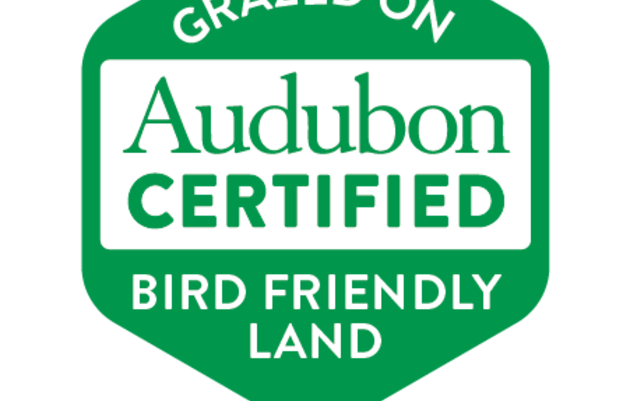On May 26th the US Fish and Wildlife Service (FWS), the federal agency with regulatory authority over endangered species, is expected to announce their decision whether or not to extend endangered species protection to the Lesser Prairie Chicken across the bird’s range that includes portions of 5 states (Texas, Oklahoma, Kansas, Colorado and New Mexico).
Endangered species listing is one of the most impactful decisions made in the conservation of our most imperiled wildlife species. The Endangered Species Act (ESA) prohibits anyone from harming an endangered species either directly or indirectly, it mandates the development of a recovery plan for the species, and it requires the establishment of critical habitat that is to be protected.
For the Lesser Prairie Chicken, the time is long overdue for FWS to extend these protections to the bird that was first proposed for ESA listing in 1995. In the more than 25 years since that original petition, the bird has been through a roller coaster of listing decisions, court orders, and failed recovery efforts all while the populations continue to plummet. If we are to save this bird from extinction it is time to turn a corner on this recovery effort and grant these birds the protection they need, here’s why:
1. Extinction is forever
Best estimates place the evolution of the Lesser Prairie Chicken in the late Tertiary period, over 2 million years ago. The first humans that would have discovered the bird where those that migrated to North America across the Bering Strait land bridge around 15,000 years ago. From that time on, the bird and the First Nations that populated the continent lived side by side. The chicken serving as an important food source for the prairie tribes and the indigenous use of fire ensuring the chicken had the open, nutrient-rich, and diverse grassland habitat it needed to survive. This bird was so iconic to the First Nations that several of the oldest dances that prairie tribes perform are modeled after the elaborate courtship displays of the bird.
The chicken’s populations likely began their decline as European settlement spread across the west. Suppression of fire, eradication of the American Bison, and removal of the indigenous people from the landscape would have been the first wave of significant changes that were to come to the American Prairie. Over-hunting and Post-WWII expansion of croplands would have driven further declines.
Formal bird surveys and monitoring across all bird populations began in earnest in the US with the advent of the Breeding Bird Survey in the mid-60’s. Since that time, Lesser Prairie Chicken populations have declined by 97% across their range. This decline is one of the most precipitous in the US, prompting Partners in Flight to recognize the Lesser Prairie Chicken on their Red Watch List as one of the most vulnerable to extinction in North America.
If we allow this bird to go extinct we will have succeeded in erasing over 2 million years of natural history in less than a century.
2. The science is clear
Along with the listing decision, FWS is expected to release a Lesser Prairie Chicken Species Status Assessment in which the listing decision will be justified by relevant science. Until that assessment is released it will be unknown how FWS has analyzed and drawn conclusions regarding the bird’s population. However, a report recently released by the Western Association of Fish and Wildlife Agencies (WAFWA) presents a very concerning picture of the bird’s current status.
While the overall population has slightly increased since historic lows in 2013, that increase can be attributed to growing populations in just one (the sub-population in northwestern Kansas) of the four distinct sub-populations that still remain. Meaning that the populations in the panhandles of Texas and Oklahoma, and the eastern portions of Colorado and New Mexico, have continued their historic declines despite the federal government’s investment of over $65 million dollars in voluntary conservation efforts in those areas.
Even the gains in the Kansas sub-population are likely fleeting given that populations of upland gamebirds like the chicken tend to rise and fall from one year to another based on rainfall patterns. There remains a lack of evidence that any action we have taken to date has made as much impact on the bird as a few rainy seasons in Northwestern Kansas have.
3. New recovery effort needed
What is needed now is a robust recovery effort that applies the full conservation toolkit to the mission of saving this bird. This recovery will need to include regulation and restrictions on industry. As oil and gas development in the Permian Basin encroaches on the southern end of the bird’s range and renewable energy development creeps ever closer to active leks (the breeding grounds where chickens engage in courtship displays), restrictions must be placed on where such development can occur. Without the regulatory mechanism of the ESA it will be impossible to protect the last best places for the bird as evidenced by poorly sited energy projects that have been installed during the times when the bird was denied federal protection.
Along with regulation, recovery of this species is going to require us to “double-down” on voluntary conservation measures and to continue to provide regulatory assurances for those companies and individual landowners who choose to be a part of the effort to save the bird. Recent negotiations regarding a Habitat Conservation Plan for the bird are a promising step, but also something we’ve seen before.
Following the last decision by FWS to list the bird as “threatened” under the ESA (a decision that was ultimately vacated by the courts), the ensuing recovery was guided by a Range-wide Plan that directed a large federal investment to the Lesser Prairie Chicken Initiative. Unfortunately much of that funding was squandered and misappropriated by the aforementioned WAFWA who was put in charge of managing the initiative. With little to show from past efforts, the decision to list the chicken will result in the development of a FWS led recovery effort, a welcome change based on the poor performance of its predecessor.
4. Chickens vs. jobs is a false choice
For too long, industry has pitted the fate of the environment against our economic prosperity in a zero-sum game. Whether it’s the Spotted Owl in the Pacific Northwest or the Greater Sage Grouse in Wyoming, we are told time and again that we can’t have both jobs and environmental protections. This ploy is as predictable as it is successful and it has been and will continue to be used as a means to argue against the listing of the Lesser Prairie Chicken.
Industry proponents are already arguing that the bird should not be listed due to the economic hardship it will cause while also trying to make the case that energy development does not significantly impact the bird. Which begs the question; if energy development isn’t hurting the bird then why worry about regulation at all?
In reality, energy development does impact birds in the places where the two overlap and therefore what the birds need are restrictions placed on energy developers to avoid the few areas where the birds can still be found. The scale of this restriction will amount to a sliver of the land available to oil and gas developers in the Permian Basin, and an even smaller proportion of the land available to wind developers throughout the Great Plains.
In addition, if the species is listed, we will see a continued (and likely increased) investment of 10’s of millions of federal dollars which will go to farmers and livestock producers to help them make improvements on their properties which will better the conditions for these birds while also improving the condition of the lands on which these producers depend for cattle grazing and agricultural production.
5. Chicken conservation = carbon sequestration
While tree planting is often championed as a natural means to sequester carbon, the ability to sequester carbon in grasslands is often overlooked. However, a number of recent research findings have shown the potential to sequester carbon by restoring grassland diversity and function to be very high, and also faster and possibly more widespread than other natural sequestration mechanisms.
The conditions that chickens need across western rangelands (i.e. healthy perennial bunchgrass communities, abundant flowering plants, healthy and productive soils) are the same conditions that will trap carbon in the form of roots and micro-biotic communities. If we are successful in restoring the suitability of large portions of Lesser Prairie Chicken range, we will inevitably be making a major contribution towards addressing the global climate crisis.
The management needed to accomplish this cannot be put into place without the partnership and cooperation of livestock producers who will also benefit from the improvement to forage quality and groundwater infiltration that accompanies grassland restoration. Helping these producers graze their herds in a manner that mimics that of the American Bison is a strategy that the Audubon Society has championed with the development of our Conservation Ranching program that provides a win-win solution for birds and beef producers. Its innovative solutions such as these that we must pursue if we are to save this bird, the landscapes, and the planet they depend on.
With the impending listing decision, FWS will have the ability in this moment to take a major step forward in conserving this species, while also bolstering rural economies, and addressing the climate crisis. The time is now for FWS to put the full weight of federal protection behind the effort to conserve the Lesser Prairie Chicken, before it’s too late.




